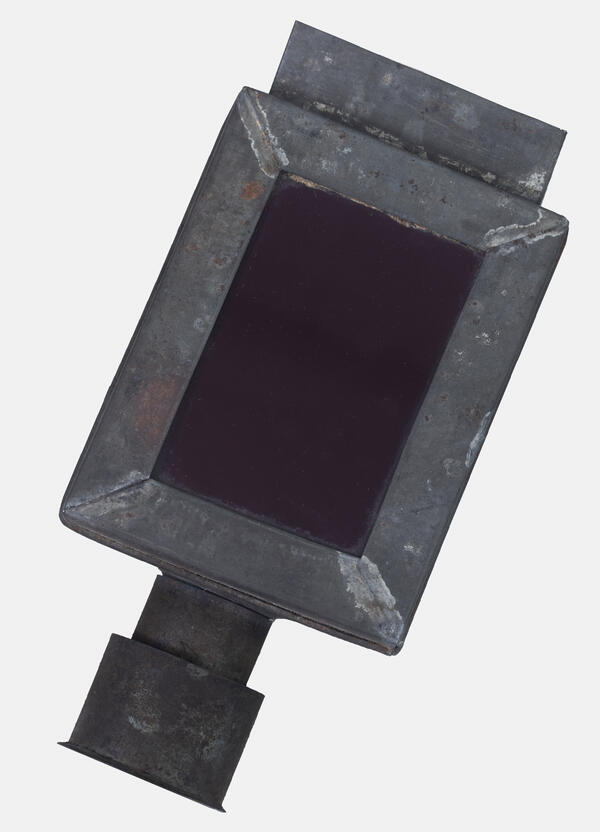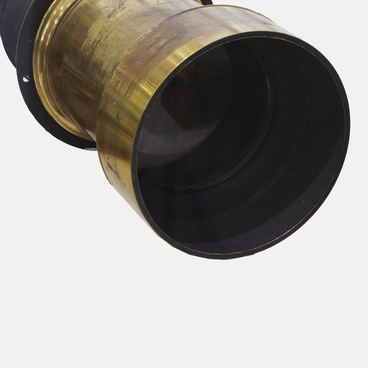A red safelight is an important element in the darkroom, used for developing photosensitive materials. Earlier models used candles as the light source, while modern ones feature an incandescent lamp. The lamp filter was made of various materials, for example, from glass, fabric, acetate, or paper. Fabric or ground glass can diffuse light, which allows it to evenly illuminate the room. The colored filter could be red, orange, or yellow-green.
Foldable safelights were advertised as convenient to use while traveling and in landscape photography. They generally used candles as the light source. It should be noted that, in the 19th century, photography equipment was quite bulky. Going on a trip, photographers brought along a heavy camera, a tripod, a black blanket, and glass plates carefully packed in a special box. All that was joined by a portable darkroom because the plates treated with a photosensitive substance dried up quickly and needed to be developed immediately. Therefore, a bottle with a special substance called collodion, vials with various salts and, of course, a foldable red safelight were required for proper processing.
Once they arrived at the shooting location, photographers would find a place to set up a darkroom and a tent, prepare a photographic plate with the red safelight on, place it into a cassette and only then start shooting.
The use of a candle in safelights for constant work was tiresome and not totally safe. Therefore, when working in stationary darkrooms, photographers used oil lamps, in which the wick could be adjusted from the outside.
French writer Theophile Gautier, who visited the Trinity Lavra of St. Sergius in 1858, left some interesting recollections about the place,



